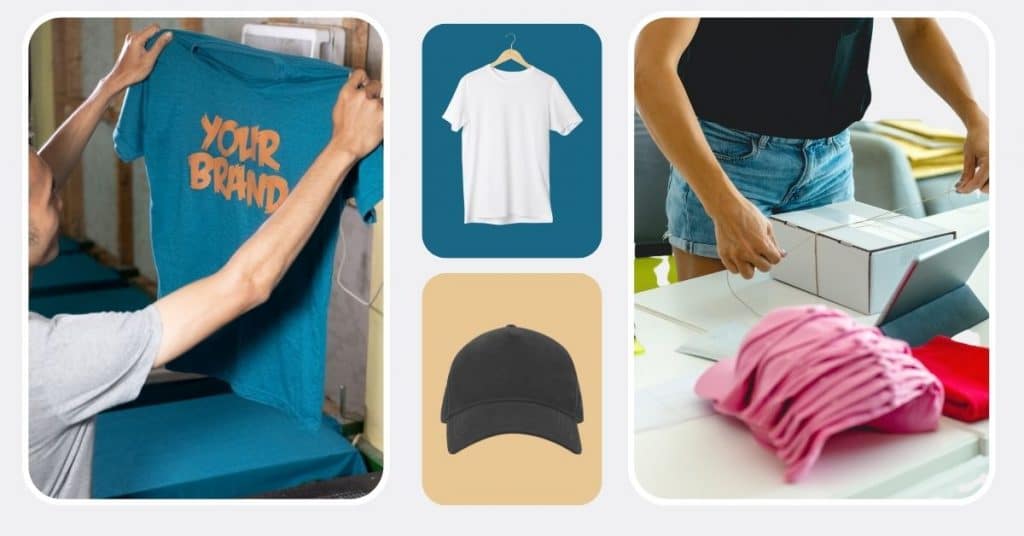
This page contains affiliate links, which means I may receive a commission if you purchase through links on my site, at no additional cost to you. Find out more here: affiliate disclosure.
Congratulations, you’ve formed an amazing band… but now what? Making great music is one part of establishing your band, the other is building your audience. Selling band merch helps build your audience and allows fans to be part of your music, your creativity, and your gang. Selling band merch is a great way to create a new revenue stream whilst further increasing the bond between you and your fans. In this article, you’ll find a step-by-step guide on how to make merch, manufacture and sell it.
Making and selling merch can be a lot of fun, so embrace it! Good luck!
Table of Contents
Why do people buy merch?
Fans love it! Merch can help celebrate a memorable moment, show an open expression of dedication and support for an artist, an unspoken declaration of creative identity, or appeal because it simply looks great. Humans need kinship, which we find in the fashion, moral, political, and creative logos that we wear. These symbols tell others how we spend our free time, how our creative and emotional brains feel, and even how we like to dance. Buying merch is an act of self-expression. So help your fans express themselves.
How to Make & Sell Merch in 7 Steps
- Define your brand identity
- Merch research
- Design and mock-up your products
- Making band merch
- Choose a print-on-demand partner or find a manufacturer
- Set up an online merch store
- Promote your merch
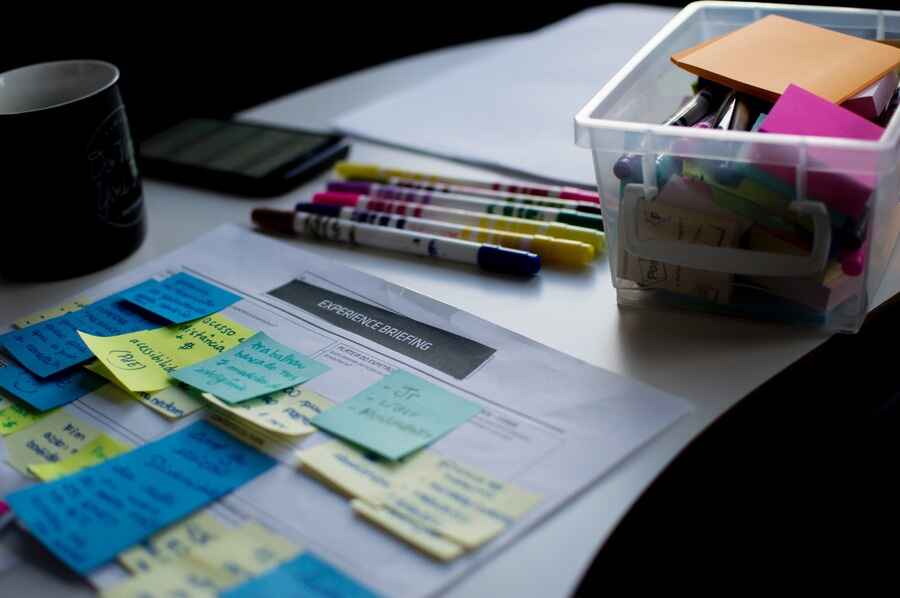
1. Define your Brand Identity
First things first: what is your Artist Brand? What does your band stand for? How do your fans see you?
Determine artist branding
To start determining your brand, consider what makes your band unique. What does it stand for? Grab a pen and paper and identify themes and traits that are important to you. This will help you narrow down the aesthetic of your band and help you decide what kind of merch you want to make. The ideas you develop while determining your values and brand are the starting point of your merch-making process!
Reflect on colours, symbols, logos, text, and font choices. What would you and your followers be proud to own? Consider where your band sits in the musical landscape. Think about what makes your band and its creativity unique and how this can be expressed in branding. If you are an experimental band, for example, would an organic or surreal aesthetic suit your branding?? Or if you are an upbeat pop band, do you need brightly coloured branding to suit your joyful lyrics and melody?
Top Tip: Create a Pinterest mood board to build a visual aesthetic for your brand & collect merchandise ideas.
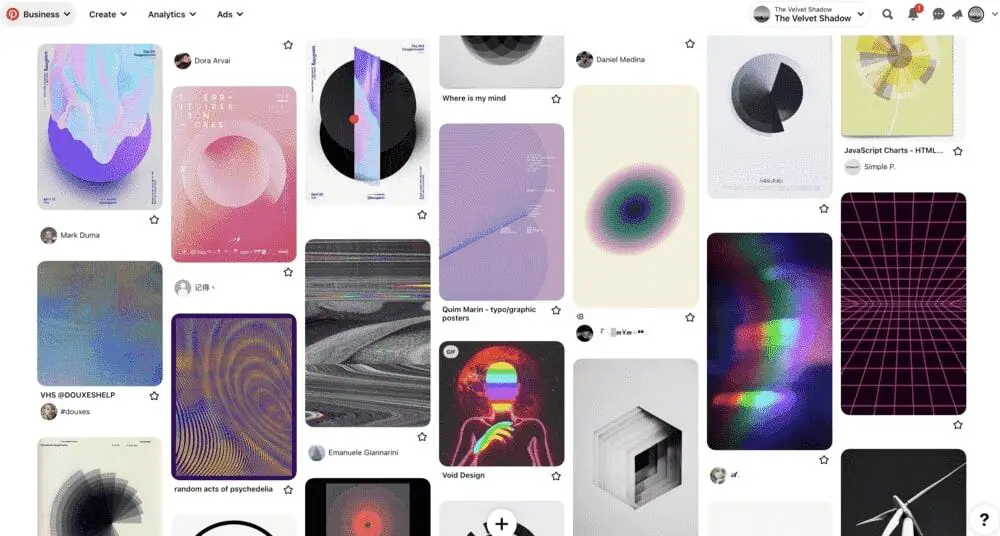
Research what to Sell
Next, think about what type of merch you want to sell. Is clothing a good choice for your followers, or will posters be of more interest to them? You could also consider items that appeal to your fan’s creativity such as guitar picks, drumsticks or notebooks.
Look at the existing brand of your musical icons who have success with branding and merch. Be sure not to copy them verbatim but look at their aesthetic choices and the popular merchandise that they sell to inspire some band merch ideas. This will help you make decisions about what is desirable for your own brand.
Check out some print-on-demand stores that sell merch online such as Vistaprint or Printify. They will have products that you can print your logo onto such as t-shirts, mugs, baseball caps, phone cases and tote bags. You might find some new product ideas that would work for your brand.
Finally, think about how your brand can fluidly translate onto different merch items and still maintain brand identity.

2. Merch Research
Ask your fans
It might be surprising what merch your fans would like to buy, so be sure to get their opinions on what they are hoping for before starting production. For example, maybe they have a bond with a certain song lyric of yours that you could get printed onto t-shirts? Don’t be afraid to ask them via social media!
There’s something quite charming and inclusive about asking your existing fans directly which merch products they would like to see or giving them options to choose from. Social media polls are an easy way to ask what they would like and give you a good insight into what will sell.
Define your band merch budget and products
Ideally, selling merchandise will provide a good income for the band. To be profitable, ensure you pre-plan your merch strategy and budget costs for setting up your production line. As well as budget planning, factor in how much time it takes to make, promote, and deliver your merch.
Consider custom merch and scalable merch
Let’s look at the 4 main merch categories:
- Custom Physical Merch
- Scalable Physical Merch
- Custom Digital Merch
- Scalable Digital Merchandise.
Custom physical merch
Custom physical merch refers to any handmade and unique custom products that you sell. These custom merch items are often creatively unique but highly time-consuming to make. They can be special and collectable and sell for more than your scalable physical merch. Handwritten lyrics or items that have been signed would fall under the custom merch category.
Scalable physical merch
Scalable physical merch is easier and faster to produce than custom merchandise. It includes any product that you can easily produce and sell. Ideal for fans with different budgets as they can support your band by fashioning stickers, badges, clothing and accessories. The go-to merch that fans regularly want in this category are T-shirts, hoodies and hats. You can also consider doing limited edition merch such as a small run of special CDs or vinyl.
Custom digital merch
Any digital product you offer that can be personalised falls into this category.
You can provide personal voice messages, birthday videos, or shoutouts on social media. Many musicians already use the platform Cameo to do just that. You can of course include these products in your online store too. (A great birthday gift for your fans).
Other custom digital merch options you could offer are one-off music lessons or an invite-only stream from your studio.
Scalable digital merch
Custom digital merch can be time-consuming to make, so pre-recording concert clips, and lessons, or offering special follower community merch like; digital sheet music and ‘behind the scenes’ messages, is a good way to save time and sell merch online.
Initially, making the digital merch will require an investment of time and maybe some small upfront costs. Once your products are completed though you will make a massive saving on the material cost of reproduction, which is much healthier for your profit margin.
Related: Best Music Business & Marketing Books
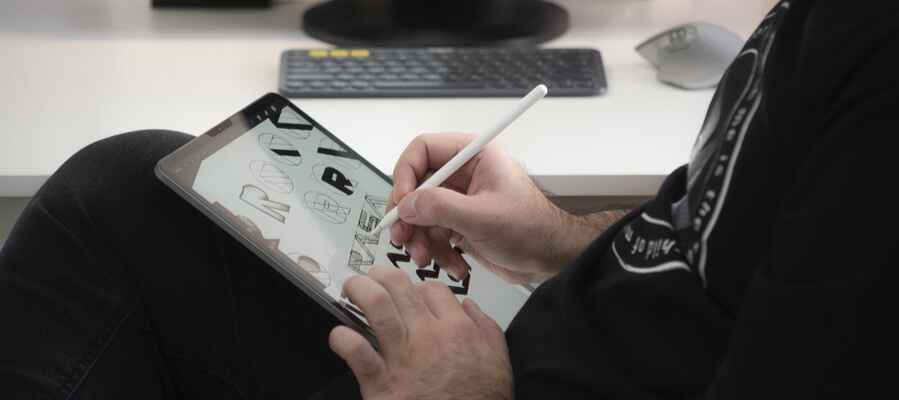
3. Design and mock-up your products
Brainstorm cool merch ideas
There are several methods of finding the perfect merch for your band.
If you’re feeling artistic you could design your own merch and bring your personal flair to your merch that your audience will appreciate. With great free software such as Canva, you can even design your merch on a low budget.
Or, you could hire the skills of a visual artist or designer whom you admire. Working with another artist also has the benefits of potential collaboration and exposure to your collaborator’s audience.
Alternatively, you can find a freelance merch designer at online sites like Upwork or Fiverr.
Design and mock-up your products
Most print-on-demand websites have mock-up design tools that help you visualise your designs. Check them out as this will help you get a real feel for your merch.
If you are going to outsource final designs to other artists make sure that you’re clear with your brand vision and explain to the other creators exactly what you are expecting. Share any brand guidelines and mood boards that are descriptive of the band’s concept and its followers. Over-communicate rather than under-communicate and be clear in your feedback during the design reviews.
Go through your mock-ups thoroughly, and if there are some decisions that you can’t quite make you can always ask for the opinions of your followers again at this stage.
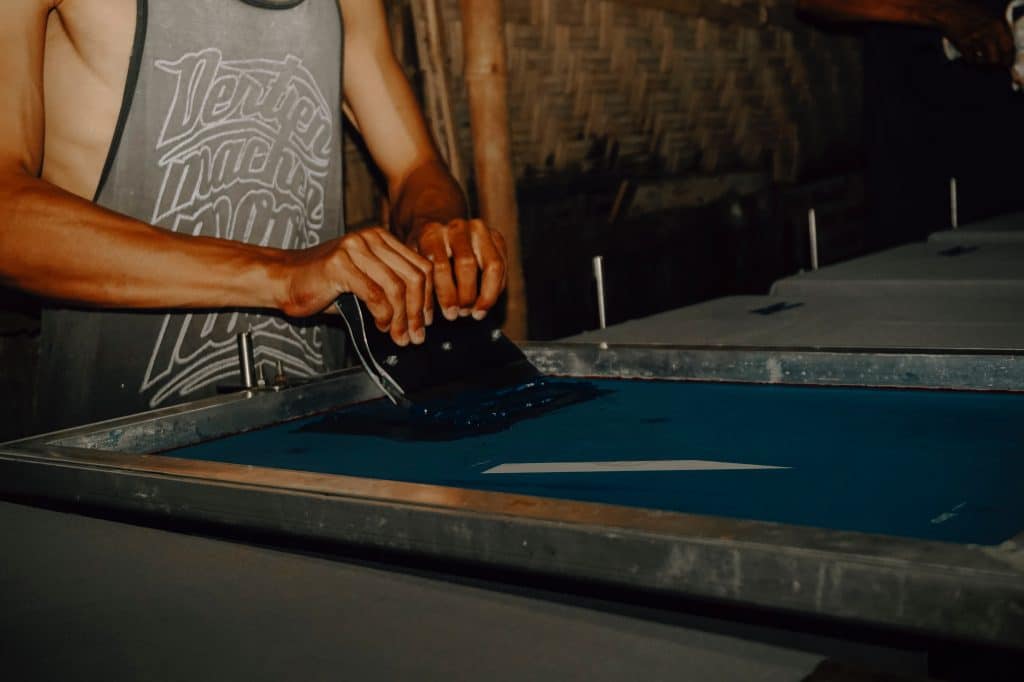
4. Making band merch
Once you have your design, logo, and mock-ups of what you want to sell, you’ll need to make it! Making band merch can be organised with:
- A local company or merch maker,
- A Printmaker
- Online print-on-demand services
Order merch in bulk
Ordering in bulk prepares you for various upcoming gigs/tours where there might be both die-hard fans and new customers. Ordering in bulk is very expensive in the short term but usually, there are ‘quantity price breaks’ which offer better value and provide long-term savings.
Keep in mind that ordering many different designs and colours is often more expensive than bulk buying just a couple of limited colours and designs. Keep it simple to start.
Before placing an order, always carefully check your design spec a few times, and get someone else to check it too. Avoid costly mistakes and stresses by ordering well in advance of the dates you need your products.
Order Samples of Your Custom Merch
I strongly advise ordering samples of your custom merchandise before making a bulk purchase.
Getting samples gives you an opportunity to check the quality of your designed items. It can be difficult to see on a computer screen, if a design or item is high enough quality, or to see the real colour or fit of an item – getting the sample ensures you are happy with the product and that more importantly your fans will be too. This step in quality control is essential to help avoid expensive mistakes. Skip it at your peril! 🙂
If using a print-on-demand service I also advise buying a one-off prototype to check for errors before committing to listing in your store or bulk purchases.

5. Print-on-demand merch options
One of the easiest ways to prototype your ideas and set up a merch store is with a Print-on-demand website such as Vistaprint, or Printify.
Print-on-demand services let you simply upload your designs and have them printed onto physical merchandise so you can start selling custom merch quickly. Print-on-demand is a great option for selling music merchandise as it reduces your investment in stock and outsources the printing, ordering and shipping process, allowing you to reduce overheads and automate your sales. i.e. – you have to do a lot less!
There are a number of print-on-demand websites available, or you can integrate some into your existing website. Such as Shopify’s option here.
Finding a manufacturer
There are many companies such as Fanofafan and Merchbar that make merch for brands and bands. Shop around and find a manufacturer that can make and produce the products you want. The benefit of using a manufacturer is that you get far greater control and flexibility to create your envisioned product, however bare in mind it’s a lot more work and much more expensive.
When searching for the right merch manufacturer be certain of these four things before signing a contract:
- Intellectual property rights – Make sure it’s clear who owns the Intellectual Property rights of the designs. In case you stop working with a partner you need to make sure that you retain the rights to your brand’s intellectual property of the merch design, and anything new that was created during the partnership.
- Compensation structure – What’s the revenue share? Make sure you agree on whether the work is a fixed cost or variable based on profit revenue share. Revenue share models with merchandising companies can vary from 5% < 50% of your revenue.
- Commitment – Arrange a trial period, for example: 3 months or one item. This will help you get insight into the efficiency of the partner; whether they meet deadlines, what the quality of their products are, and how your working relationship might go. If you are content after the trial, then it is still recommended not to sign anything long-term with one partner.
- Hidden costs – Throughout production keep revising any costs that arise during automated production such as shipping fees, design fees, website management, customer service fees etc. This will ensure that you don’t come across any unexpected and hidden costs.
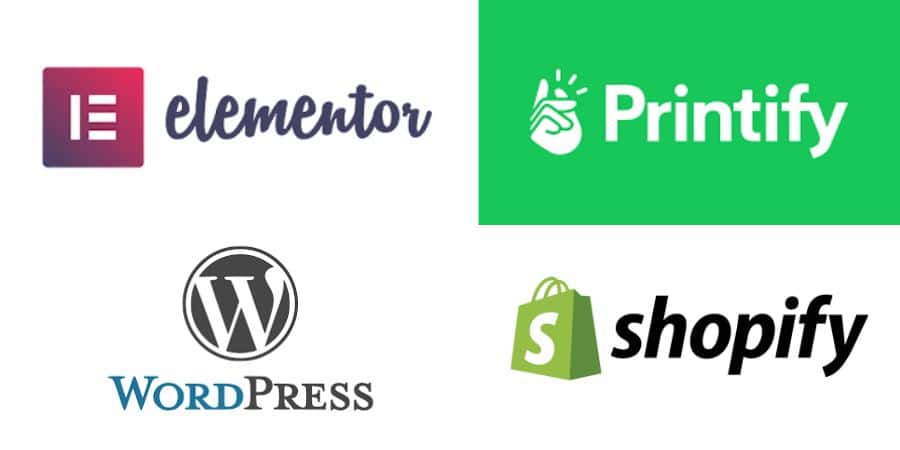
6. Set up an Online Merch store
Setting up an online store is the perfect platform for your fans to find you and your products in one location. You have a range of options when it comes to setting up your online shop.
You could sell through your existing music website or set up a store with one of the following providers:
Create a great user experience
When designing your site it’s important to make compelling visual imagery and brief, interesting product descriptions for every merch item in your online store. Take your time to curate these images and display your writing in a clear, easy-to-read font that stands out from the website’s background colours.
Browsing should be a seamless experience for new customers. Create an organised and categorised store that’s obvious and easy to navigate. Keep it simple and start small with a mix of print-on-demand merch ideas and a few unique custom pieces. As you start to sell merch at a good rate, you can start to expand your store.
Using pre-made merch sites like Shopify ensures you’re using design layouts that are optimised for sales and user experience. They’ll help you ensure your shoppers have an easy experience purchasing, checking out, and contacting you. Once you’ve built your online store, a good idea is to ask friends to try it and provide some critical feedback.
Build up your products
As you start to sell merch regularly it’s a good idea to vary your purchase options.
Bundles – bundling your products together sell wells and helps shift an assortment of items in one go.
Adding upsell options – Add a ‘Related Products’ widget to help sell more stock.
Review your offers regularly to keep followers interested.
Bundles and upsells can be effective seasonally, or after a significant event/gig, particularly when you’re trying to clear stock.

7. Promote your Music Merch
So, how do you sell merch? Promoting your merch can feel a little awkward… but have faith, your existing audience will be keen to hear about it. If your promotion & merch is on point it’ll also encourage new fans to your work and boost your following. There are many ways you can promote your merch online, let’s have a look at some of the best.
Promote on Social Media
Different people favour different social media platforms so be aware of which works best for your followers. Using video shorts is a great way to start selling merch online. They give you the opportunity to provide details about your new products, fashion them yourself and explain offers like your bundles. Custom merch is easy to promote on social media too, with your voice and visuals adding an even more personal touch.
Top Tip: Consider integrating your merch into the promotion of your next single or tour.
Social media can also create a train of conversation between your follower community so ask them to share, tag or hashtag their purchases on their platforms like Instagram stories. Re-sharing their stories yourself will contribute to audience connection.
Certain social media platforms also allow you to integrate your shop and products into your profile & posts. Ensure you do this & provide links and a CTA (Call to Action) within your content so your fans know exactly what to do and where to go to find your merch.
Related: Music Marketing Tips
Integrate your products into your content
A natural way to plug your merch is in the content you make. This might mean wearing it in your videos, promoting it directly in social media posts, or weaving it into your blog content.
Instagram – Use the Instagram shop function which you can attach to your profile
YouTube – makes it easy to share links to your products in the video description and a call-to-action can be added to the end of the video.
TikTok – links you to other creators so they can create their own content with your products involved.
Linktree – Add a smart link to any social media account. The link will take you to a mini landing page that you can customise to promote your merch, music and other URLs. Here’s an example: https://linktr.ee/Thevelvetshadow
Band website – If your band website is separate from your online sales shop then add a link to your merch shop in your navigation menu, footer and where appropriate in your content.
Twitch – Put a link to your store in your profile or use TeeSpring or Streamlabs to integrate a merch store. Streamlabs also allows you to create a “!merch” command for chat.
Email – Include links to your merch shop in the footer of your emails and email newsletters
Use your mailing list
Mailing lists are usually an existing audience of die-hard fans, so reward their loyalty with a first look at new merch, exclusive sale offers, or specially designed products for mailing list subscribers. Creating incentives such as 10% discounts for joining the mailing list is also a great idea.
Use Landing Pages
Landing pages are a good way for musicians to promote a new product drop or create a campaign around a certain item. Landing pages connect your music fans with other information surrounding your band, and access to your mailing list, events, and campaigns all in one place.
Set up your website with Google Analytics, social media pixels and Google Tag Manager so you can monitor a wealth of data. This is extremely valuable data for advertising or running promotional campaigns on social media as you’ll be able to track what is helping you sell online. Also see “Remarketing” below.
Analyse Sales (Adjust your merch offerings)
As your merch sells, make sure you are analysing what sells and what doesn’t. Consider adding variations of popular merch by providing more colours or a different version of a similar current item: such as long-sleeved t-shirts if your short-sleeved t-shirt is popular.
Don’t forget that this is all for the music so promote your music alongside sales.
Related: SEO Tips for Musicians
Decide When to Launch Your Merch Campaign
To avoid overwhelming yourself (and your fans), make a predetermined timeline and plan of when to launch campaigns and new products throughout the year. Begin with easy-to-produce but mid-low price popular items and once your revenue stream starts to grow then start selling more pieces that are related to the last. Factor into your plan the time it takes to design merch, manufacture and ship.
With careful planning, you’ll be able to coincide merchandise campaigns with your tours, local gigs and new music releases. It’s also helpful to have new merch to push in between music releases to keep your fan base engaged.
Remarket to your existing audience
Retargeting allows you to promote ads to your existing audience based on their online activity, such as whether they follow you on a certain social media platform, like certain posts or have already bought from you. The major social media platforms like Facebook, YouTube etc, allow you to run retargeting ads – you just need to install their advertising pixel on your website. Retargeting ads are often more cost effective as you are advertsing to an audience you know already like you & your products.
Run a presale
A presale gives your audience the opportunity to purchase your product as soon as it drops. This also gives you an insight into demand before investing in stock and losing any unnecessary upfront costs. There are many pre-order apps to help you run your own presale or crowdfunding sites that are the perfect platform for this, a popular one being Kickstarter.
This article should have given you an initial insight into the design process for your own personal brand, how to create your very own catalogue of merchandise, set up a new revenue stream for your band, how to make a merch site and then how to start selling your own merch. The next step is going for it!
Related Articles:
Get more merch tips: 8 Best Music Marketing Books (and Music Business Books)
Improve your merch store rankings: SEO for Musicians
Ideas to help promote your music & merch: Music Marketing Tips












